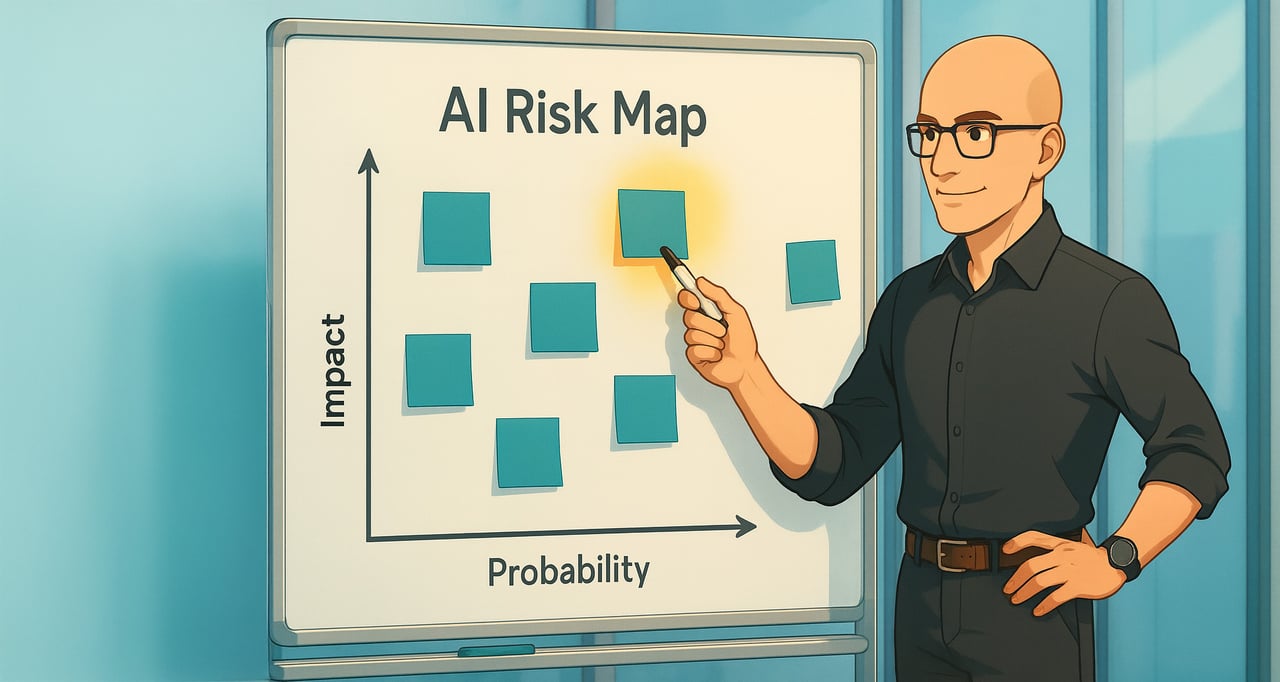
Strivenn Thinking
Pull up a seat at our
digital campfire
where story, strategy,
and AI spark
new possibilities
for sharper brands
and smarter teams.
What is ISO 42001 and Why Should Life Science Companies Care?
By Matt Wilkinson
AI is everywhere right now, in pitch decks, product launches, nearly every "next big thing" campaign on LinkedIn and even within your browser and search engine results. But here's the problem: most marketers are talking about AI without truly understanding the responsibilities that come with using it.
Enter ISO 42001. It's not just another checkbox or certification. It's the world's first international standard for how organisations manage AI responsibly, and in life sciences, that means everything.
So, what is ISO 42001, really?
Think of ISO 42001 as ISO 9001, but for AI. It defines how to govern, deploy, and monitor artificial intelligence in a way that's ethical, transparent, and safe.
It calls for clarity around how models make decisions, assigns real accountability when AI is used in workflows, and builds in guardrails to identify and mitigate risks. And perhaps most importantly, it ensures that humans stay in control.
In life sciences, where compliance, claims, and data ethics are non-negotiable, these principles aren't a luxury, they're the baseline.
Why it matters for life science marketers
If you're building campaigns around diagnostic data, clinical outcomes, or regulated tools, you already know compliance is non-negotiable. Yet the marketing world's approach to AI has been the opposite: move fast, prompt everything, worry later.
Life science companies don't have that luxury. ISO 42001 offers a framework that aligns with the same discipline your regulatory and quality teams already follow. It connects AI innovation with the structured governance life science marketing has always required – and that makes it the bridge between "AI hype" and operational reality.
Will governance kill the creative spark?
Some worry that adding structure will stifle innovation. But in life sciences, speed without compliance isn't innovation, it's risk. The truth is, the fastest path to AI success is structured experimentation within trusted guardrails. That's what ISO 42001 is designed for.
What smart teams are doing now
Forward-thinking marketers are already:
- Mapping their AI touchpoints (content, analytics, automation) to 42001's risk areas
- Establishing internal "AI steering groups"
- Partnering with consultancies that demonstrate compliance literacy, not just AI capability
Bottom line: knowing how to use AI isn't enough. If you don't understand how to govern it, you're a risk, not an asset.
The takeaway
For life science companies, ISO 42001 isn't an abstract compliance exercise – it's the foundation for trustworthy, scalable AI adoption. It's how you move from "playing with prompts" to building AI literacy and systems your quality team would actually sign off.
And for agencies serving this industry, understanding ISO 42001 is no longer optional. It's the new baseline for credibility.
At Strivenn, we've made ISO 42001 part of our DNA, because it's not just about using AI, it's about using it well. We're proud to be the only life science marketing consultancy (that we know of) with certified AI Management Systems practitioners trained on ISO 42001. That means we don't just follow the rules, we help you lead responsibly.
Q: Our team is already stretched thin. Do we really need to worry about ISO 42001 if we're just using ChatGPT for content drafts? ▼
A: Yes, but start small. Even basic AI use creates compliance risk in life sciences. Map where you're currently using AI - content generation, data analysis, email personalisation. Document your prompts and review processes. ISO 42001 doesn't require certification immediately, it provides a framework for responsible use. Start by establishing a simple review protocol: who checks AI outputs, what gets flagged, and how you handle regulated claims. This protects you now and builds foundation for scale later.
Q: How do I convince our CEO this matters when they see AI governance as "slowing us down"? ▼
A: Frame it as risk mitigation, not red tape. Show them the cost of getting it wrong: regulatory warnings, pulled campaigns, or worse, patient safety issues. ISO 42001 actually accelerates safe innovation by creating clear guardrails. Use language they understand: "We're building the compliance infrastructure now so we can move faster later without regulatory exposure." Propose a 30-day pilot mapping your current AI use to identify gaps. Quick wins prove value without major investment.
Q: What's the first practical step I can take this week to align with ISO 42001 principles? ▼
A: Create an AI use inventory. Spend two hours documenting every tool using AI in your marketing stack - content generators, analytics platforms, automation tools, even browser extensions. For each, note what data it accesses, who approves outputs, and where claims are made. This audit costs nothing but reveals your risk landscape immediately. Share findings with your quality or regulatory contact to start the conversation. It's the foundation every ISO 42001 implementation needs, and you can do it today.



